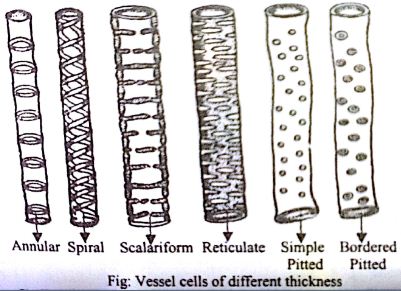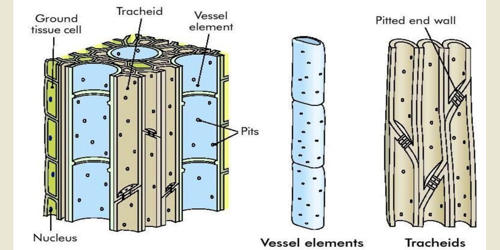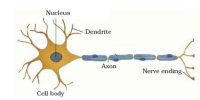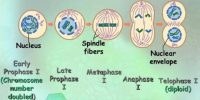Xylem tissue: Xylem tissue is made of some living and dead cells. It carries water absorbed by roots from soil to different parts of the plant body. It is the specialized tissue of vascular plants that transports water and nutrients from the plant-soil interface to stem and leaves and provides mechanical support and storage.
Xylem is the tissue of vascular plants that transports water and nutrients from the soil to the stems and leaves. It plays an essential ‘supporting’ role providing strength to tissues and organs, to maintain plant architecture and resistance to bending. Moreover, it also provides mechanical support to plant. In a cross-section of a plant, under a microscope, xylem appears star-shaped.
Structure
Xylem is made up of several types of cells. Tracheids are long cells that help transport xylem sap and also provide structural support. Vessel elements are shorter than tracheids but also help conduct water. They are found in flowering plants, but not in gymnosperms like pine trees. Xylem also contains parenchyma, a tissue that makes up most of the soft parts of plants, and long fibers that help support the plant. Xylem tissue is composed of four component parts:
(1) Tracheid
(2) Trachea or vessel
(3) Xylem parenchyma and
(4) Xylem sclerenchyma.
Tracheid:
- It comprises of dead cells.
- Cells are long and tapering at two ends.
- The cell wall is hard, rigid, and lignified. Pits are present on the wall.
- The cells are attached.

Trachea or vessel:
- It consists of dead cells.
- The cells are tubular and hollow inside. The cells that are connected end to end forming hollow tubes are called vessels.
- The cell walls are lignified and they base bordered pits.
- The xylems having a very narrow diameter are called prow-xylem while the xylems having large diameters are called meta-xylem.
Xylem parenchyma:
- The parenchyma cells that are present in xylem tissue are called xylem parenchyma. They are the only living cells of xylem tissue
- The cells are elongated and cell walls are thin
Xylem fiber:
- The sclerenchyma cells that are present in xylem tissue are called xylem fiber. They are also dead cells
- The cells are narrow, elongated, and pointed at the end.
- Cell walls are thick, lignified, and have bordered pits.
Functions of xylem: The main function of xylem is to transport water, and some soluble nutrients including minerals and inorganic ions, upwards from the roots to the rest of the plant. Xylem cells form long tubes that transport materials and the mixture of water and nutrients that flows through the xylem cells is called xylem sap. These substances are transported through passive transport, so the process doesn’t require energy.
- Trachea or vessel carries water and minerals, absorbed by roots to leaves and other green parts of plant bodies.
- Tracheid of xylem tissue gives rigidity to plants and carries water and minerals from the root to stem and leaf.
- Xylem fiber gives rigidity to plant organs.
- The water‐conducting function of xylem is one of the major distinguishing features of vascular plants.













